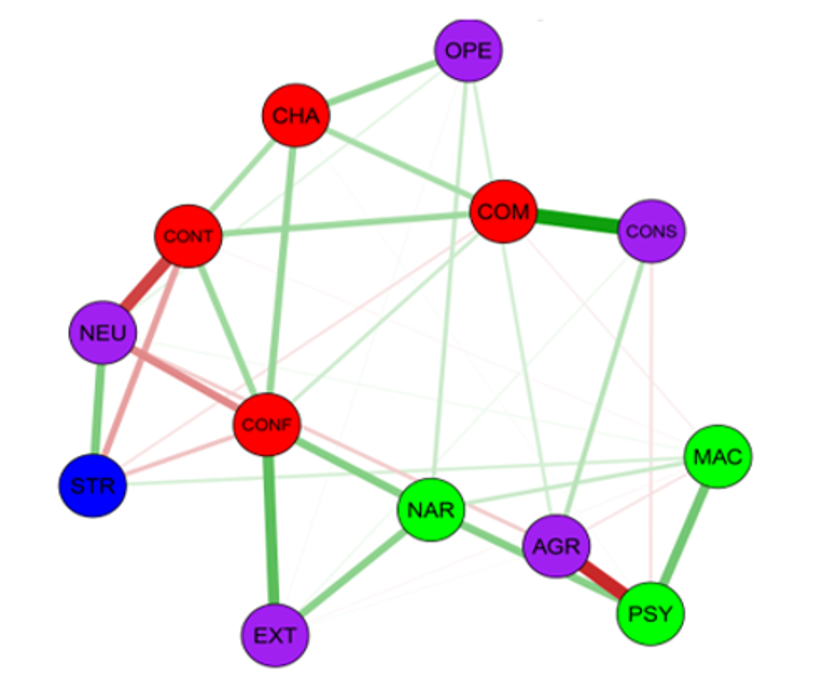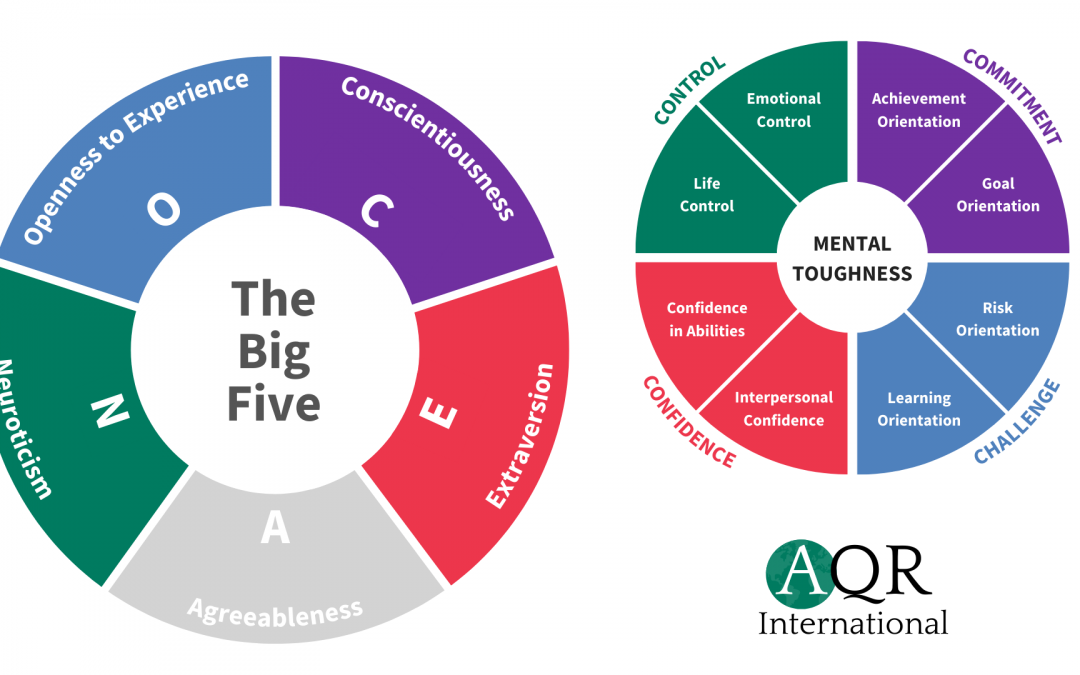“What is the relationship between the Big Five personality framework and the 4Cs Mental Toughness concept?” This is one of the most common questions received here are AQR International. The Big Five personality model is, possibly, the most widely utilised model of behavioural personality globally. It forms the foundation of many of the most reliable and popular personality measures in use.
The Big Five personality model seeks to describe, and the measures developed from it help us to assess, how we ACT when certain events occur.
Mental Toughness describes a different aspect of personality – our mental responses when exposed to stressors, pressure, opportunity and challenges. It helps us to understand how we THINK when events occur.
Given that it is widely thought that our mental approach has a significant impact on our behaviours and, through that, on performance, wellbeing, aspirations etc, it’s not a surprise that many ask about the connection between mental toughness and the Big Five personality model. It should help us to understand better why we respond the way we do when events occur. This can be seen to be a potentially fundamentally important perspective.
And, indeed, there is a connection.
In 2019, Dr Kostas Papageorgiou, Queens University, Belfast, and colleagues at the University of Milan, as well as Professor Peter Clough, completed research using network analysis to examine this relationship amongst others.
The study involved almost 750 people completing the MTQ48 and a Big Five personality measure (BFI). The study also looked Stress and the Dark Triad. These latter elements are reported in other articles in this series. The technique used, Gaussian Graphical analysis, enables users to identify the connections between core constructs in a model or between constructs in different models.
The output can be summarised visually in the form of a network, as shown below.
The 4 Mental Toughness constructs are shown in red nodes:
CONT – Control
CHA – Challenge
COM – Commitment
CONF – Confidence
The Big 5 factors are shown as purple nodes:
NEU – Neuroticism
OPE – Openness to Experience
CONS – Conscientiousness
EXT – Extraversion
AGR – Agreeableness
The colour of the line connecting nodes indicates whether there is a positive (Green) or inverse (Red) relationship.
The thickness of the line broadly indicates the strength of the relationship. The thicker the line the stronger the connection.
One immediate observation is the 4 Mental Toughness constructs are connected with each other, indicating that they can be conceptualised as part of a common concept: Mental Toughness.
Examining the relationship with the Big Five personality factors we can see that there is a strong relationship between the 4 Mental Toughness Factors and four (4) of the Big Five personality factors. These relationships also make theoretical and practical sense.

Neuroticism has a strong inverse relationship with Control and a degree of inverse relationship with Confidence. Indicating that the more you think you are in control of your life and circumstances and have self-belief in your abilities, the less likely you are to show neurotic behaviours (anxiety, etc).
Openness to Experience is strongly associated with a positive mental approach towards Challenge and Opportunity.
Confidence (which embraces Interpersonal Confidence) unsurprisingly is strongly related to Extraversion and inversely associated with Neuroticism.
Conscientiousness is very strongly related to Commitment (the ability to visualise what needs to be done and the drive derived from the anticipated satisfaction of doing it).
Agreeableness is only moderately linked to Commitment. Again, this is interesting because Agreeableness is subject to debate in terms of how exactly it does fit with the other four Big Five Personality factors.
The study’s results are thus in line with what one would expect and consistent with previous research.
It is particularly useful in explaining how an understanding of the mental toughness of an individual can explain their behaviours, and from where much of those behaviours might derive. Addressing the fundamentally important question “Why do I behave the way I do?”.
It’s an important, and perhaps vital, contribution to understanding people and their development.
As ever, the wider picture is nuanced and these nuances are examined in other articles in this series and, indeed, in the Mental Toughness Licensed User Training programme. For example, behaviour may be strongly determined through the way you approach things mentally but will also be influenced by other factors such as support, interest, skills, knowledge and abilities, familiarity, etc.
Nevertheless, it seems that if we are concerned with assessing, understanding and developing behaviour, then it is important that we understand from where that behaviour derives. It would seem that assessing and understanding our mental toughness is a key to this.
If your interest is piqued to learn more about your own Mental Toughness profile and how to assess and develop Mental Toughness in others, please visit www.aqrinternational.co.uk. and if interested in being a licensed user, contact us through the site.
Feel free to connect with me too on LinkedIn or via doug@aqr.co.uk

Bridging the gap: A network approach to Dark Triad, Mental Toughness, the Big Five, and perceived stress. Papageorgiou, K. A., Benini, E., Bilello, D., Gianniou, F. M., Clough, P. J., & Costantini, G. (2019). Journal of Personality, 87(6), 1250-1263.


